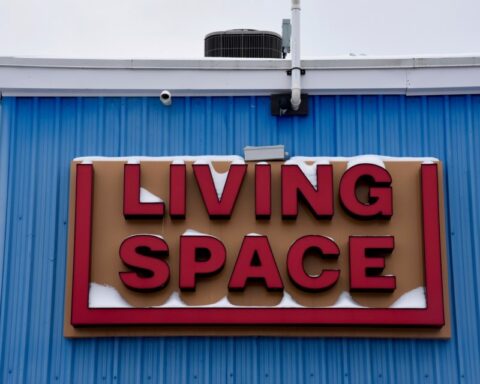For more and more new Canadians arriving in Ontario, Toronto and Ottawa are no longer the desired destinations. Newcomers seem to be moving further north in the province. As such, an innovative project is under way to assist them in the settlement process and create welcoming communities at the same time.
In North Bay, which is a three-and-a-half hour drive north of Toronto on a four-lane highway, and four hours northwest of Ottawa, staff at the North Bay & District Multicultural Centre (NBDMC) counted 66 businesses owned by newcomers. In fact, there are enough cricket enthusiasts in the newcomer community to form two teams to compete with teams in Sudbury, Sault Ste. Marie and Thunder Bay.
There is now a Filipino community in Moosonee on the James Bay Coast, with entrepreneurs, health care professionals and skilled trades’ people.
The Timmins & District Multicultural Centre, four hours north of North Bay, is seeing a similar phenomenon. To a lesser degree, it is starting to happen in smaller centres, such as South River, Temiskaming Shores and Cochrane. There is now a Filipino community in Moosonee on the James Bay Coast, with entrepreneurs, health care professionals and skilled trades’ people.
Increased immigration is new, even for the larger centres like North Bay (population 54,000) and Timmins (population 48,000.) The North Bay immigrant settlement agency opened in 2008 and expanded to Timmins in 2011. Between the two offices the agency serves the region from Parry Sound in the south to the James Bay Coast in the north – some 20 per cent of Ontario’s land mass.
A two-year project, led by NBDMC, to reach out to smaller communities began in September 2014. With almost $300,000 in funding over two years from the Northern Ontario Heritage Fund Corporation, FedNor (Industry Canada) and the participating municipalities, the project is administered in partnership with Pathways to Prosperity, a national immigration research body, providing advice and evaluation services.
The project began to formulate when James Franks, Economic Development Officer for Temiskaming Shores, approached the centre for assistance. That conversation developed into an immigration symposium in Temiskaming Shores in October 2013, and the project evolved from the symposium.
“We had no expertise in settlement services and we were starting to see newcomers arrive in the community,” Franks says. “Now, through this project, we have monthly visits from a qualified settlement worker from North Bay, and other community agencies know they can now refer newcomer clients.” Temiskaming Shores, population 10,500, is on the shore of Lake Temiskaming, the headwater of the Ottawa River and 90 minutes north of North Bay.
“Skills shortages, the need to market the region to newcomers, business succession planning and the need for more rental accommodation to attract new residents are common priorities identified by (some Northern Ontario regions).” – Garvin Cole, HR North
Many key players from Northern Ontario attended the symposium. For example, Jean-Pierre Ouellette, Chief Administrative Officer for the Town of Cochrane, population 5,340, who got his community involved with the follow-up project and Adam Killah, Economic Development Officer for the Central Almaguin Economic Development Association, south of North Bay, who represents the third municipal partner group. The Almaguin Highlands area has 15 municipalities with a total population of 23,570.
“Skills shortages, the need to market the region to newcomers, business succession planning and the need for more rental accommodation to attract new residents are common priorities identified by the three regions,” says Garvin Cole of HR North, a project of the North Bay Newcomer Network and NBDMC, which uses the skills database of internationally trained professionals, augmented by resumes of recent university and college graduates from Northern Ontario to fill positions for employers.
Originally conceived as a human resources service for small businesses in the north, he finds that even large employers seek his services. Cole helped create employers’ councils in each of the communities and these priorities came from the first round of meetings. They will all meet again in March.
The project is also addressing settlement needs of newcomers, by having trained settlement workers from the North Bay and Timmins offices visit each community monthly.
“It is so important to have personal contact,” says Deborah Robertson, NBDMC program coordinator. “Some follow-up can be done remotely but trust is developed in person.”
“I see other parts of Canada being interested in how this project turns out. It could be a model for rural Canada.” – Meyer Burstein, Pathways to Prosperity
Creating events so newcomers can meet one another, as well as long-time residents, is another facet of the project. First up is a bowling event for newcomers and volunteers in Temiskaming Shores in March.
NBDMC receives core funding from Citizenship and Immigration Canada and Ontario’s newcomer settlement program, but it seeks supplemental funding for projects such as this one.
Meyer Burstein of Pathways to Prosperity (P2P), who attended the Temiskaming Shores symposium and was involved in the formation of the project, is now leading the P2P evaluation team and is serving on the project executive committee. “I see other parts of Canada being interested in how this project turns out,” he says. “It could be a model for rural Canada.”
By the end of the project, its leaders will produce a bilingual “how-to” document. That, along with the P2P evaluation and articles published during and after the project will help disseminate the learned information nationally.
Don Curry is a journalist and former college journalism teacher. He is the executive director of the North Bay & District Multicultural Centre, a member of the board of the Ontario Council of Agencies Serving Immigrants and a board member of Pathways to Prosperity.
Don Curry is the President of Curry Consulting, which provides immigration solutions for rural and northern Canadian municipalities, and an NCM director (2022 - 23). He is also the Founding Executive Director of The North Bay & District Multicultural Centre, a multi-award winning immigrant settlement agency with offices in North Bay and Timmins. It is the lead agency for the Local Immigration Partnership project, the North Bay Newcomer Network and the Timmins Local Immigration Partnership.





